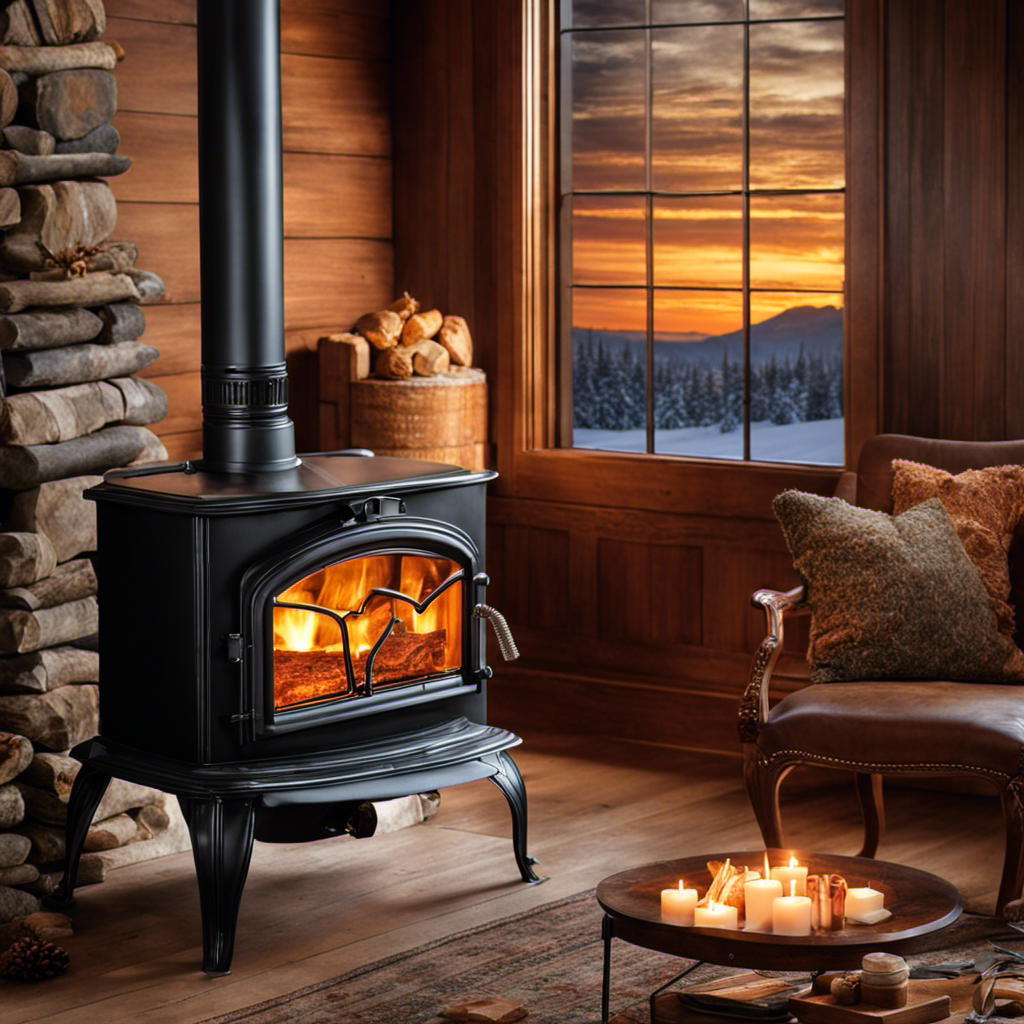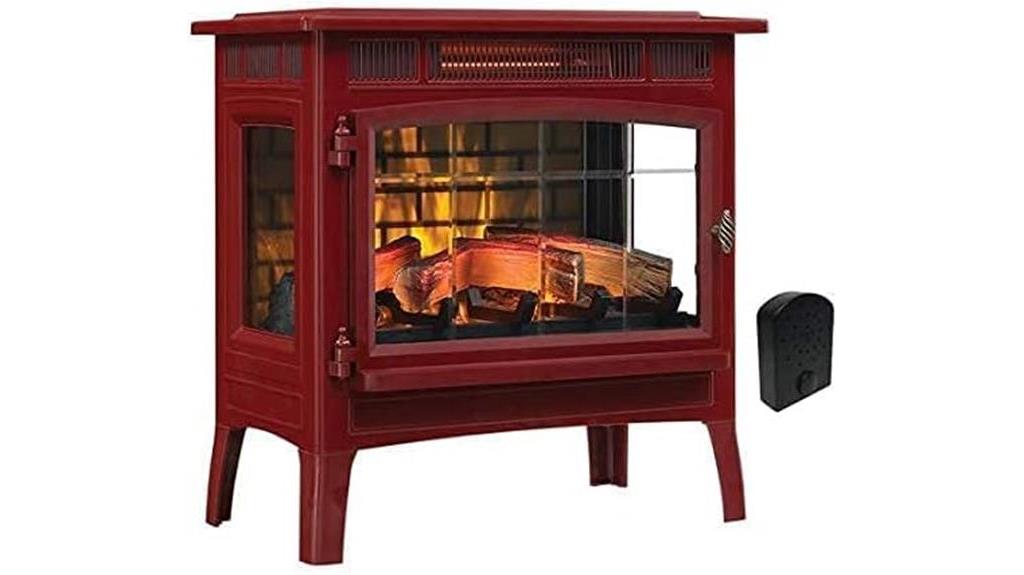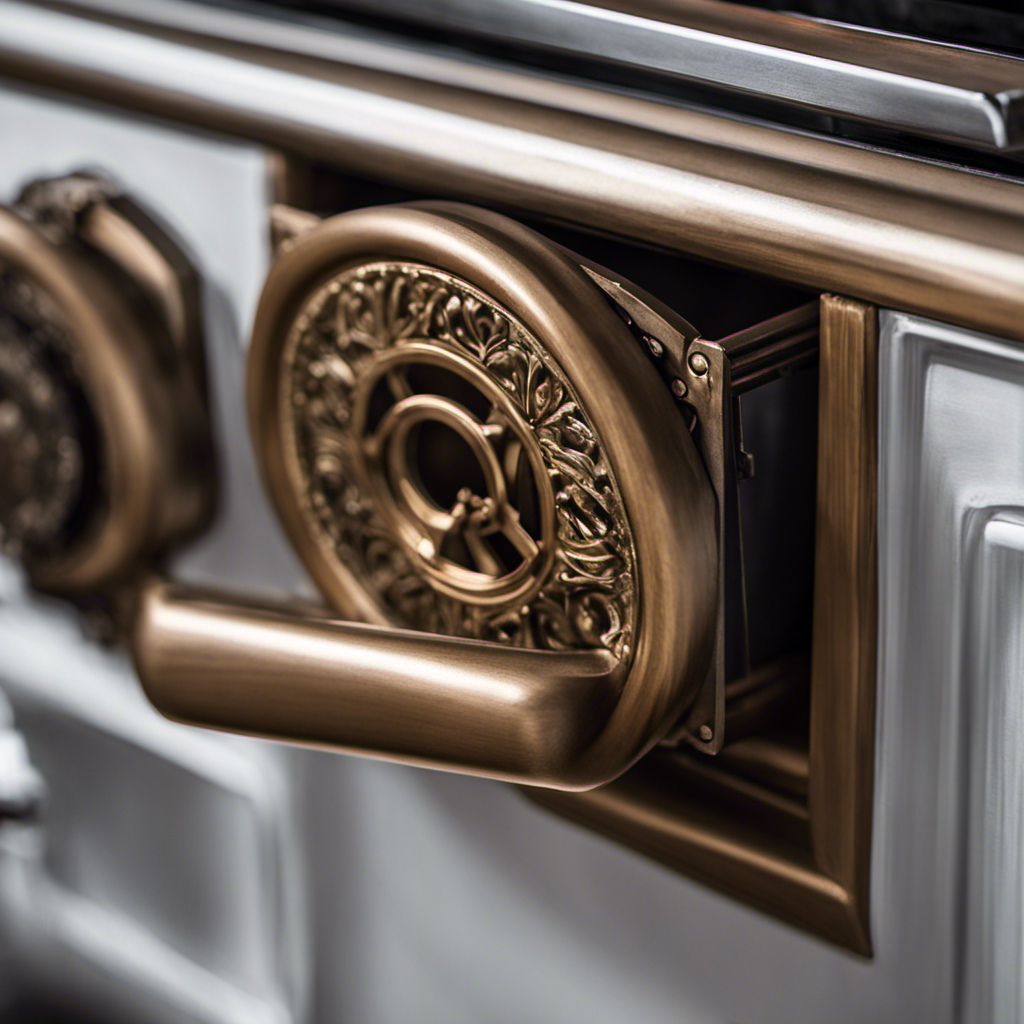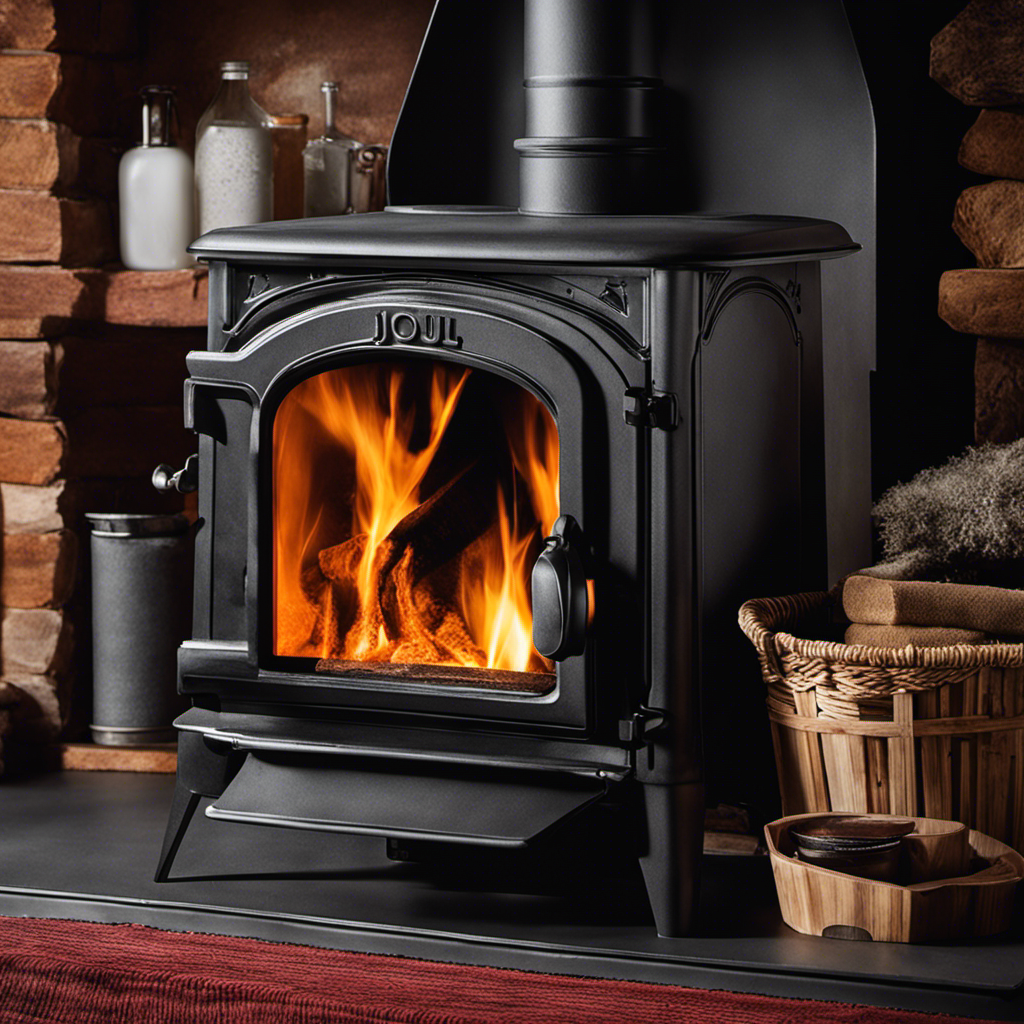Watching the dancing flames in my wood stove brings to mind the significance of maintaining a clear glass. A pane obscured by smudges or coated with soot does more than just detract from the fire’s allure; it can also affect how well the stove operates.
Fortunately, with the right tools and cleaning solutions, maintaining a crystal-clear glass is a simple task. In this article, I will guide you through the step-by-step process of achieving a pristine wood stove glass.
Key Takeaways
- Regular cleaning is important to maintain a healthy and hygienic living environment.
- Use a soft cloth or sponge and non-abrasive cleaner to prevent scratching or damaging the glass surface.
- Mix equal parts white vinegar and water in a spray bottle for an effective and environmentally friendly cleaning solution.
- Prevent soot and creosote build-up by regularly cleaning the chimney, burning dry seasoned wood, and avoiding overloading the stove with too much wood at once.
The Importance of Regular Cleaning
I can’t stress enough the importance of regular cleaning to maintain a healthy and hygienic living environment. When it comes to cleaning your wood stove glass, it’s crucial to establish a cleaning routine.
Regular cleaning not only helps to remove soot and dirt buildup, but it also prevents any potential health hazards. Using eco-friendly cleaning products is highly beneficial, as they aren’t only safer for the environment but also for your health. These products are made from natural ingredients and don’t contain harsh chemicals that can be harmful when inhaled or touched.
When cleaning the wood stove glass, it’s important to avoid common mistakes such as using abrasive cleaners or scrubbing too vigorously. These can scratch or damage the glass. Instead, opt for a soft cloth or sponge and a non-abrasive cleaner specifically designed for glass surfaces.
Choosing the Right Cleaning Tools and Solutions
To effectively clean your wood stove glass, it’s important to choose the right cleaning tools and solutions, such as a soft cloth and a non-abrasive cleaner. Cleaning techniques can vary, but there are some common cleaning mistakes to avoid.
One mistake is using harsh abrasives or scrub brushes, as these can scratch or damage the glass surface. Instead, opt for a soft cloth or sponge to gently remove any residue or soot.
Another mistake is using ammonia-based cleaners, as they can leave streaks or a film on the glass. Instead, choose a non-abrasive cleaner specifically designed for glass surfaces. Apply the cleaner to the cloth, rather than directly on the glass, to avoid overspray or drips.
Finally, always make sure the stove has cooled down completely before attempting to clean the glass to prevent any accidents or burns.
Step-by-Step Cleaning Process
The first step in the cleaning process is to gather all the necessary supplies. Here’s a step-by-step guide to cleaning your wood stove glass:
- Start by ensuring that the stove is completely cool to avoid any accidents or burns.
- Mix a solution of equal parts white vinegar and water in a spray bottle.
- Spray the solution onto the glass and let it sit for a few minutes to loosen any grime.
- Use a soft cloth or sponge to gently scrub the glass in a circular motion.
- Rinse the glass with clean water and wipe it dry with a lint-free cloth.
- Avoid using abrasive cleaners or scrub brushes, as they can scratch the glass.
- Regularly clean and maintain your wood stove to prevent excessive build-up and make cleaning easier in the future.
By following these step-by-step cleaning instructions and avoiding common mistakes, such as using harsh chemicals or rough materials, you can keep your wood stove glass looking clean and clear.
Now, let’s move on to preventing soot and creosote build-up.
Preventing Soot and Creosote Build-Up
One important tip for preventing soot and creosote build-up is to regularly clean the chimney at least once a year. This will ensure proper ventilation and reduce the risk of chimney fires.
There are other fuel efficiency tips that can help keep your wood stove running smoothly and minimize the build-up of soot and creosote.
First, make sure to burn dry, seasoned wood as it produces less smoke and residue.
Additionally, avoid overloading the stove with too much wood at once, as this can lead to incomplete combustion and increased creosote formation.
Lastly, consider using a stove fan to improve air circulation and distribute heat more efficiently.
By following these fuel efficiency tips, you can reduce soot and creosote build-up, ensuring a safer and more efficient wood stove operation.
Now, let’s move on to some additional tips for a pristine wood stove glass.
Additional Tips for a Pristine Wood Stove Glass
While I clean my wood stove regularly, I find that wiping the glass with vinegar and newspaper leaves it crystal clear. Not only does this method save me money on expensive glass cleaners, but it also ensures that I’m using natural cleaning methods that are safer for my family and the environment.
Here are three additional tips for keeping your wood stove glass pristine:
-
Regular cleaning frequency: It’s important to clean the glass at least once a week to prevent the build-up of soot and creosote. This won’t only keep your stove looking beautiful, but it will also help maintain its efficiency.
-
Use a vinegar and water solution: Mix equal parts of vinegar and water in a spray bottle. Spray the solution onto the glass and let it sit for a few minutes. Then, wipe it clean with a newspaper. Vinegar is a natural and effective cleaner that will leave your glass streak-free.
-
Avoid abrasive materials: When cleaning the glass, avoid using abrasive materials like steel wool or harsh chemicals. These can scratch the glass and damage its surface. Stick to gentle methods like vinegar and newspaper for the best results.
Frequently Asked Questions
How Often Should I Clean My Wood Stove Glass?
I clean my wood stove glass every week to maintain its clarity and efficiency. The best method I found is using a mixture of vinegar and water sprayed onto a cloth. It’s simple and effective.
Can I Use Regular Glass Cleaner to Clean My Wood Stove Glass?
Yes, you can use regular glass cleaner to clean your wood stove glass. However, there are alternative cleaning methods that may be more effective. The pros of using regular glass cleaner are convenience, but the cons include potential streaking and residue buildup.
Is It Necessary to Remove the Glass From the Wood Stove for Cleaning?
Is it necessary to remove the glass from the wood stove for cleaning? Well, let me tell you, removing the glass can make cleaning easier and more effective. But there are also ways to clean it without removing it.
What Are Some Common Mistakes to Avoid While Cleaning the Wood Stove Glass?
When cleaning wood stove glass, it’s important to avoid common mistakes. Use proper tools like a glass cleaner and a non-abrasive cloth. Avoid using harsh chemicals or abrasive materials that can scratch the glass.
Are There Any Natural or Homemade Cleaning Solutions That Can Be Used for Cleaning Wood Stove Glass?
There are natural cleaning solutions that can be used to keep your wood stove glass clean. Homemade cleaners have benefits like being eco-friendly and cost-effective. Let me share some tips and recipes with you.
Conclusion
In conclusion, regularly cleaning your wood stove glass is crucial for maintaining its clarity and efficiency.
By using the right tools and solutions, following a step-by-step cleaning process, and taking preventative measures, you can keep your wood stove glass pristine.
Just like a crystal-clear window on a sunny day, a clean wood stove glass allows you to enjoy the warm glow of the fire and ensures optimal performance of your stove.
Logan’s affair with adventure began in childhood. He hailed from a small town where vast forests bordered one side and endless shores stretched on the other. His days were spent exploring uncharted woods, climbing tall trees, or listening to the tales of old sailors. This early immersion in a world brimming with stories and mysteries became the foundation of his passion for writing.











